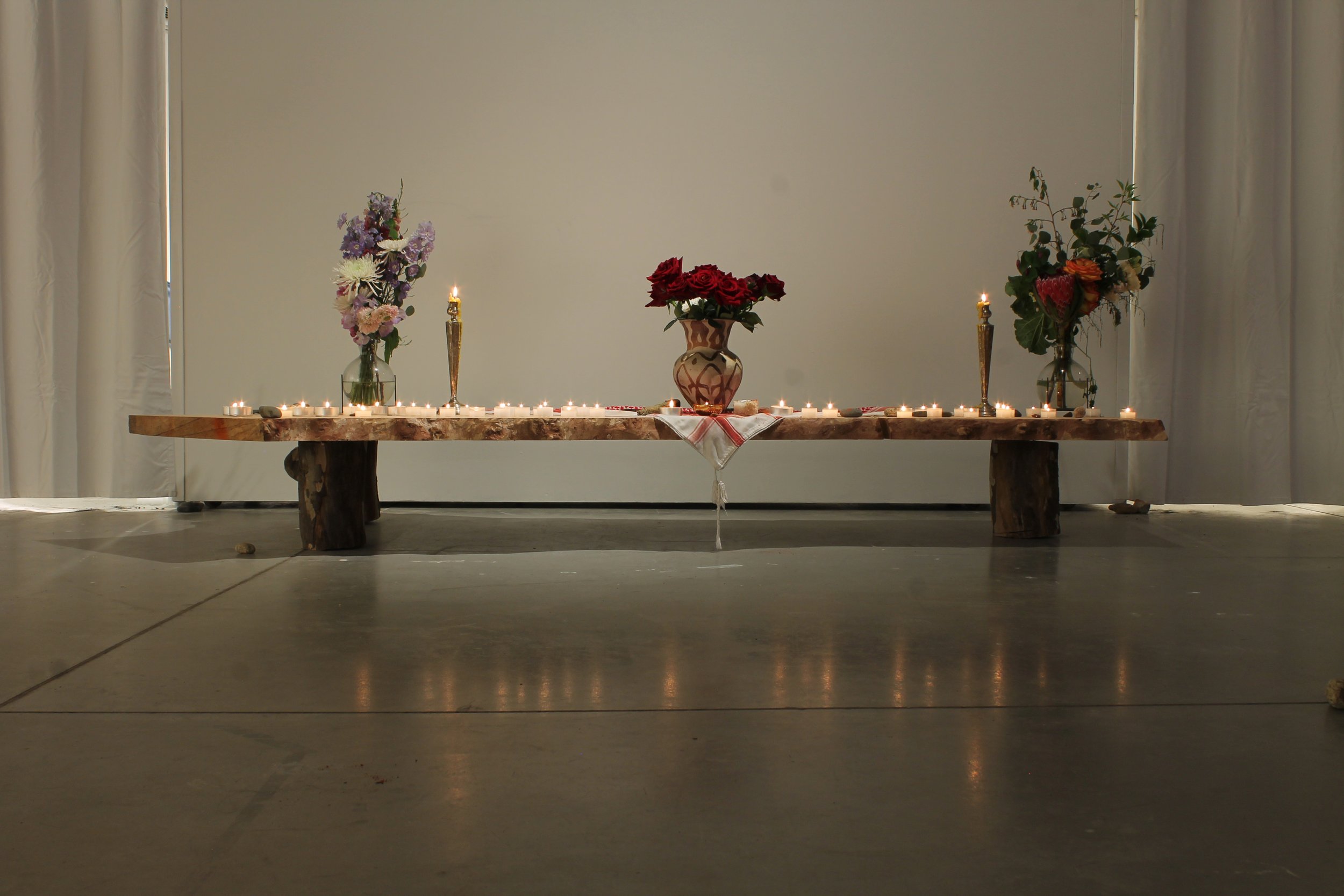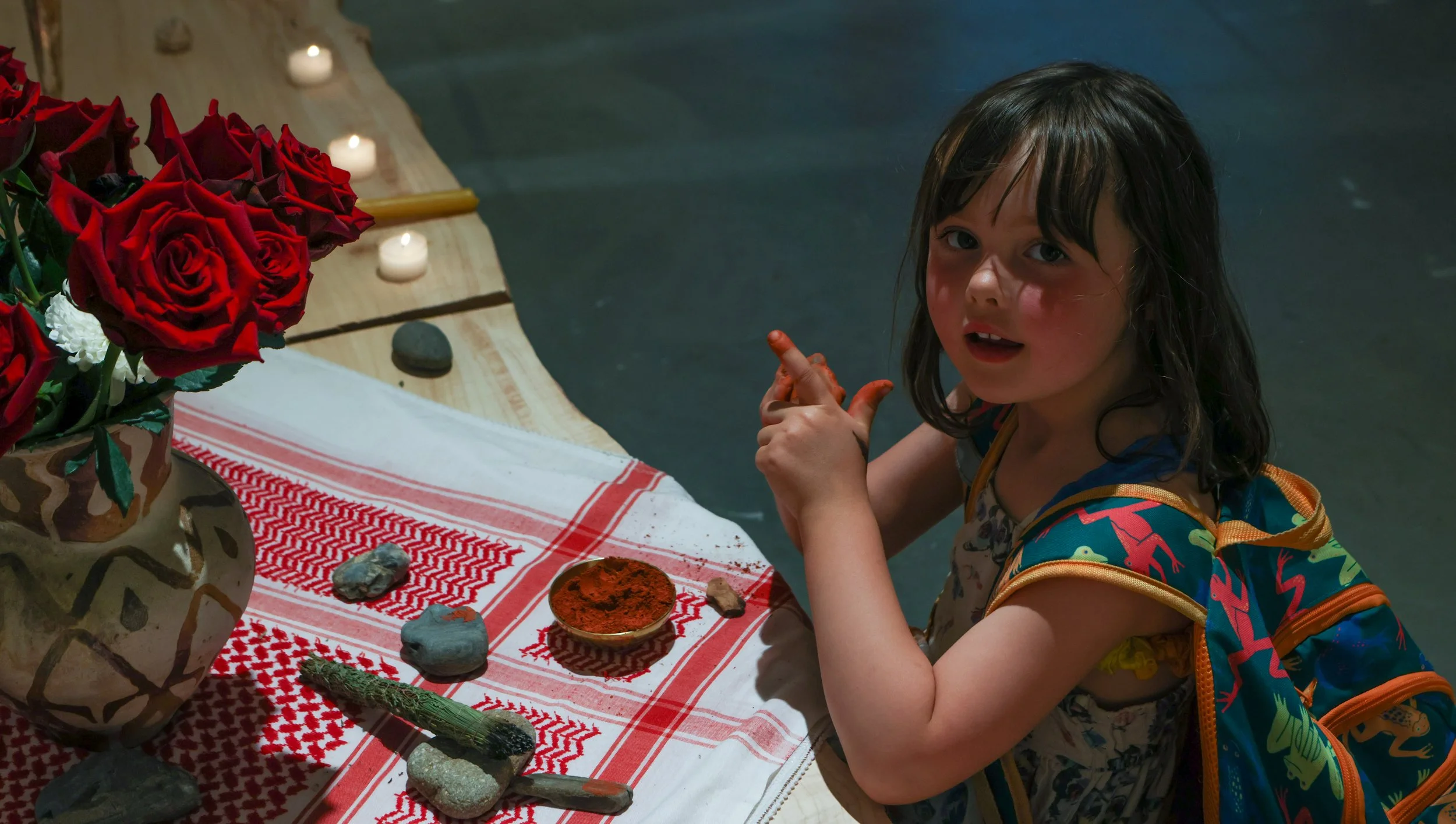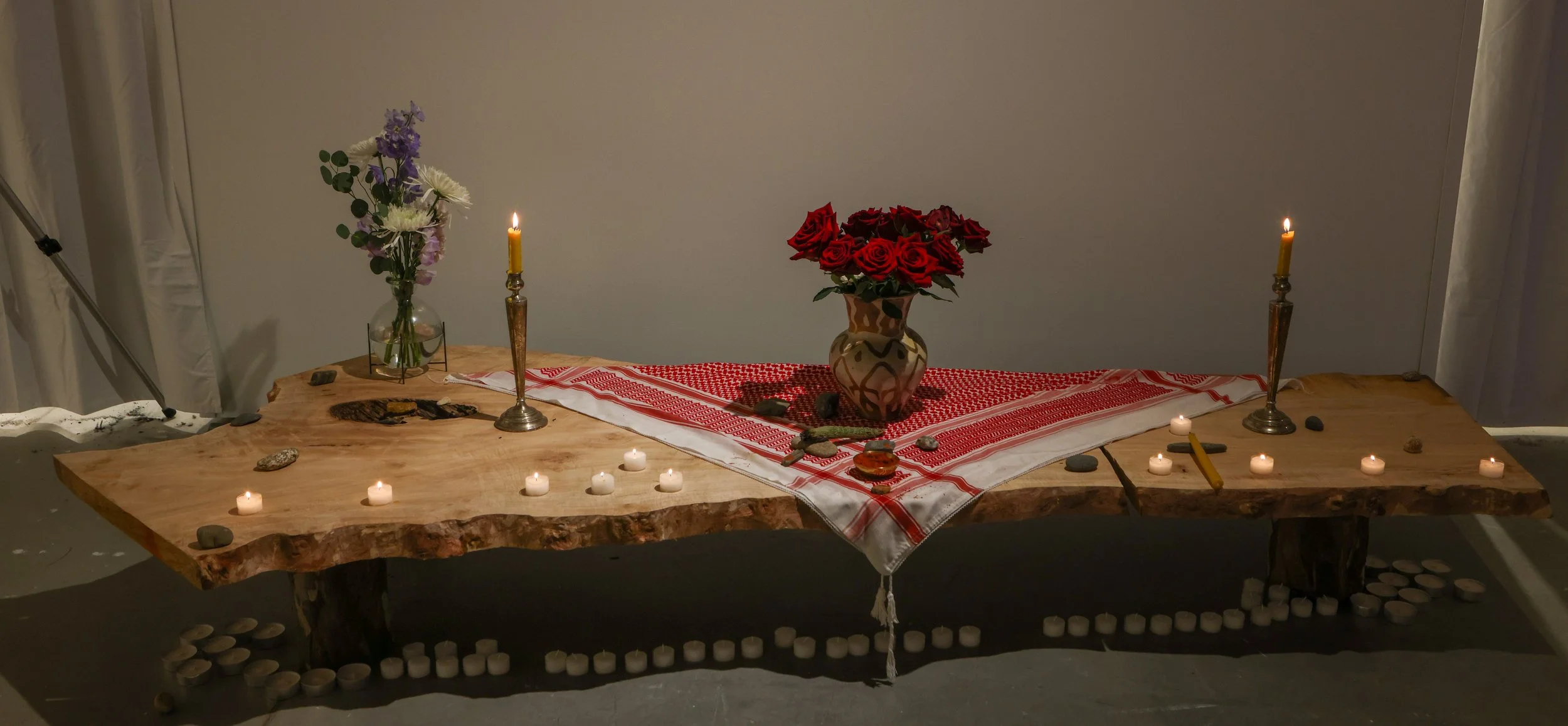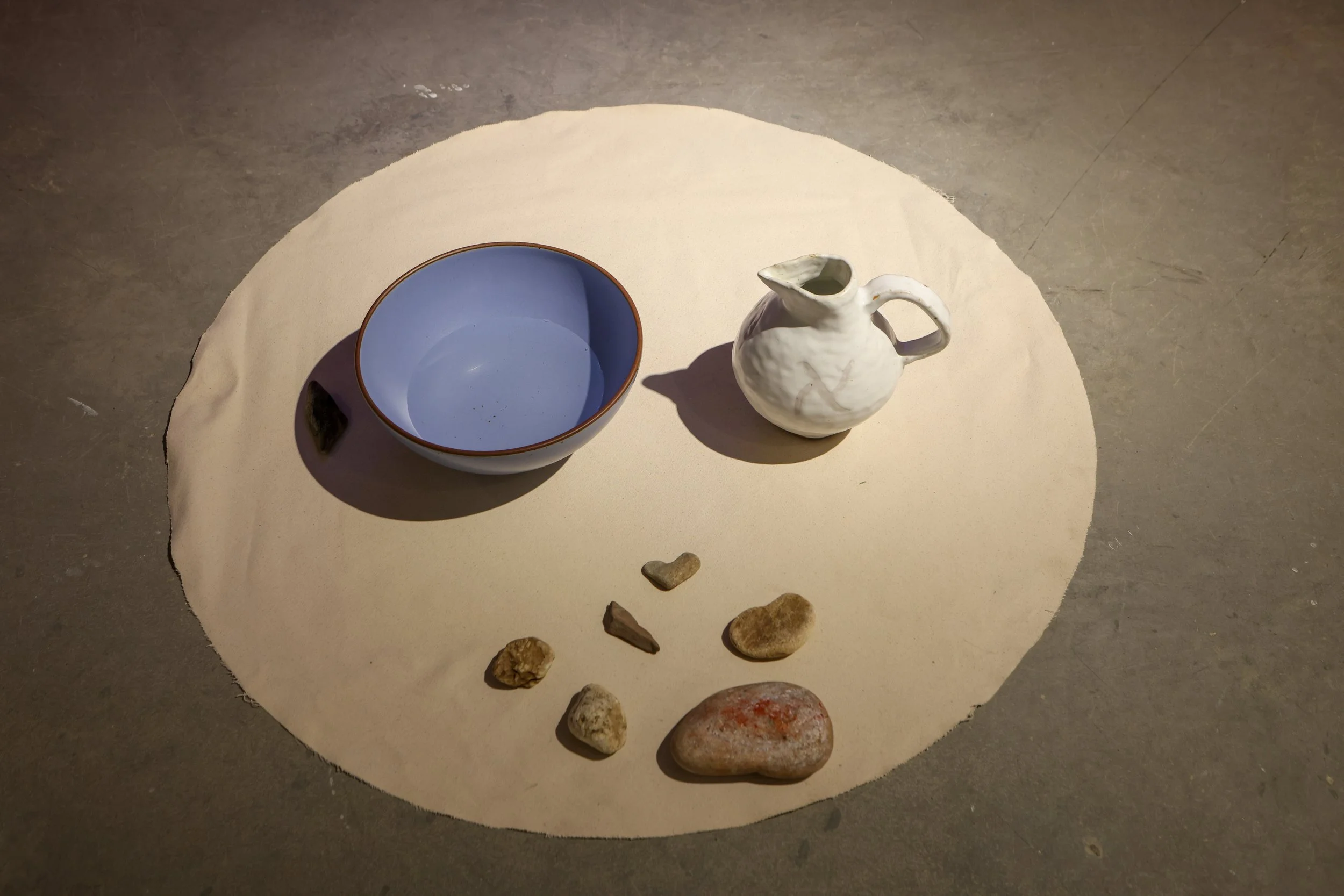work with angels
work with angels
work with angels is an art installation and grief sanctuary that was installed at the S. Tucker Cooke gallery in Asheville, NC in April 2025.
It now lives here.
“Do not be daunted by the enormity of the world’s grief. You are not obligated to complete the work, but neither are you free to abandon it.”
Pirkei Avot
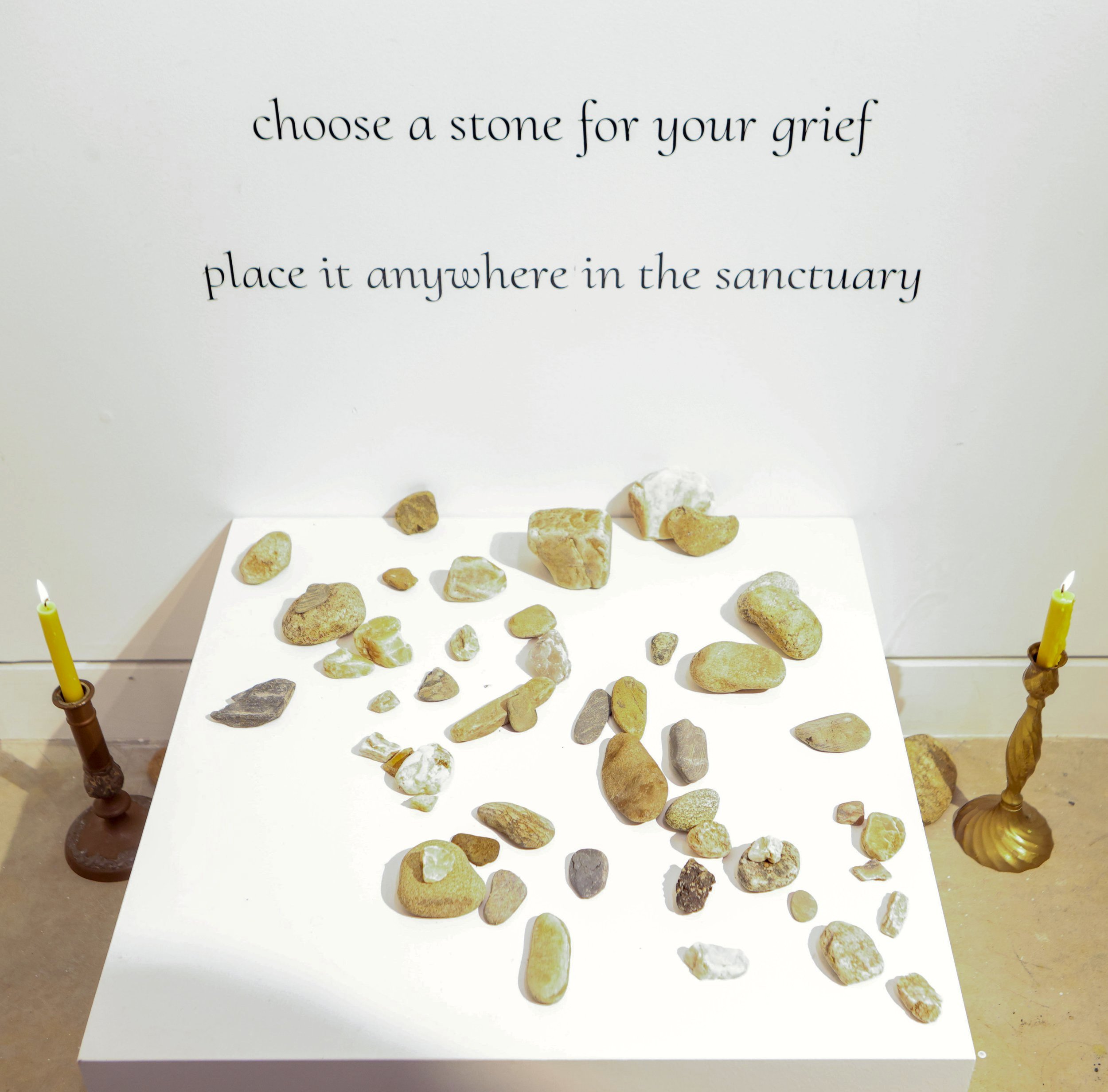
ARTIST STATEMENT
Witnessing and grappling with the ongoing Palestinian genocide as a Jewish artist is what birthed this show. As I watched, grief-stricken, the events that unfolded after October 7, 2023, only the most recent injustices in over 70 years of occupation and terror, I entered into a serious and painful conversation with my Jewish ancestors about trauma, about unprocessed grief, and about cycles of abuse. As a child, I was obsessed with books about the Holocaust, reading every story I could find. I wanted to understand and feel what had happened to us. Perhaps some part of me sensed that there was still so much for us to feel and to process through our bodies, and in our communities, in order for our people to continue to thrive and to hold onto our humanity.
Now we see, every day livestreamed on our phones, how inhuman we have become. I see it in my family, who support the atrocious actions of Israel against the Palestinian people. I love my family and I wrestle with how such good people could sign off, either directly or with their silence, on such immoral action.
Work with angels began as a series of paintings born of this grappling with my family and ancestors, trying to somehow paint sense into the connection between the Holocaust and genocide in Gaza. But these paintings were impossible to finish. Only the very first one I attempted reached completion. Zichrono Livracha (shown below) is a painting of reckoning with my Zionist grandpa Mort (z’l), whom I loved, a painting about reaching into other worlds in the hope to turn curses and pain into blessing, into healing.
I sat with the unfinished paintings, lost in the impossible attempt to make sense of any of this, feeling helpless and hopeless. And then I sensed the more-than-human world surrounding this process and I opened up to the possibility that my work as an artist was not to make paintings with clear statements about genocide and ancestral trauma but to create space in which we could all grapple and grieve and touch the unsayable together, with support from the beyond-human. I began to work with angels—the angels of ancient Jewish tradition, as I understand them—and with the elements of earth, air, fire, and water. I asked for help. I brought in a river I love, the Laurel River, and asked her for help too. I asked the ancestors. I asked the very materials I was working with: oil, wood, fiber, plastic, my own hands.
And what emerged was a kind of ritual grief sanctuary whose strange architecture invited collaboration between all who entered and all of these spirits, angels, ancestors, elements. At the opening, we sang together. We called in the angels and called in ourselves. Candles were lit, water was poured, stones were placed, we felt the songs and our own breath moving in the space.
Zichrono Livracha, 22 x 25, oil on panel
The Hebrew word for angel, malakh, is related to the word for divine work, melakha, which is the word used in the Book of Genesis to describe what the Holy does when creating the world.
Perhaps angels are involved in the work of creating worlds.
Can we humans collaborate with angels in the work of creating the world?
Kadosh, 14 ft x 6.5 ft, oil on panel
is a grief sanctuary a space of world-building?
